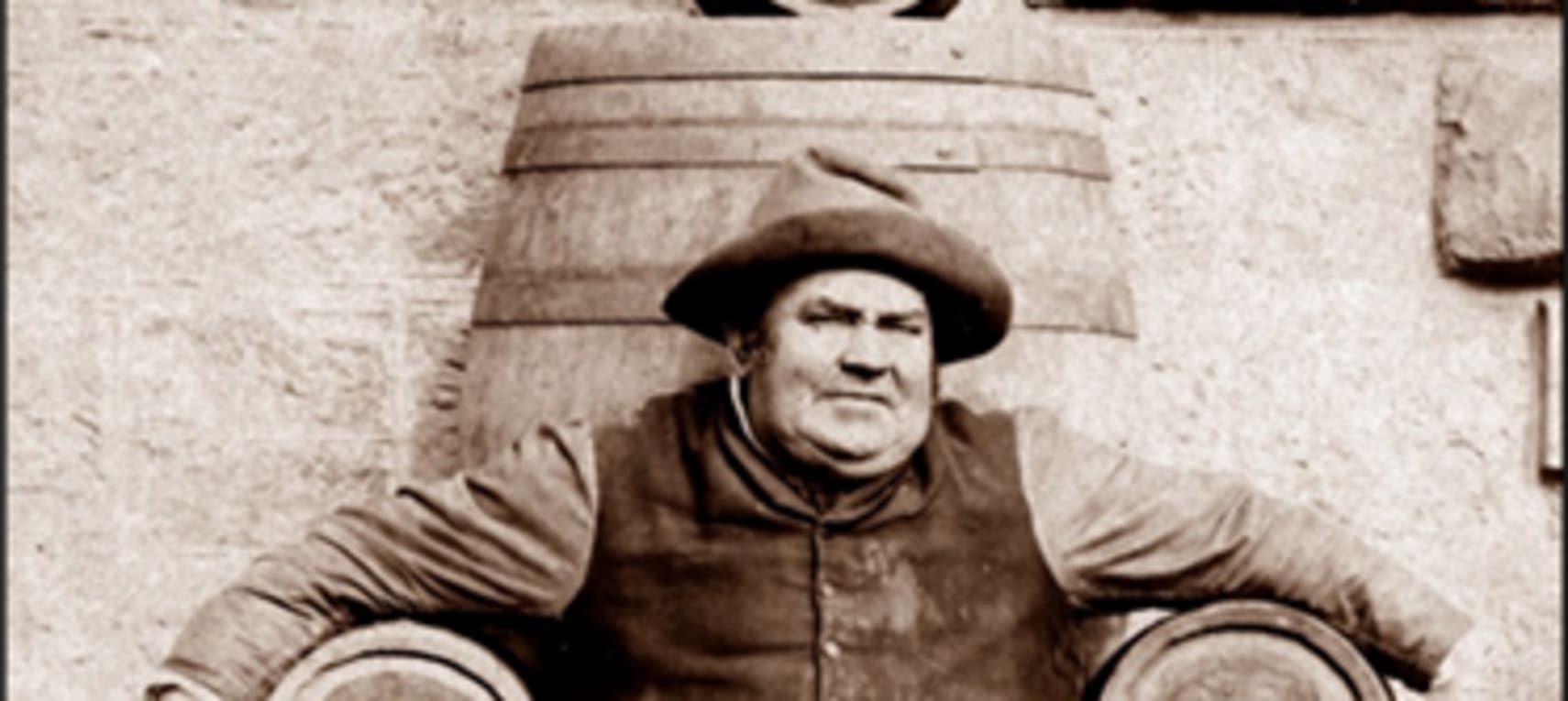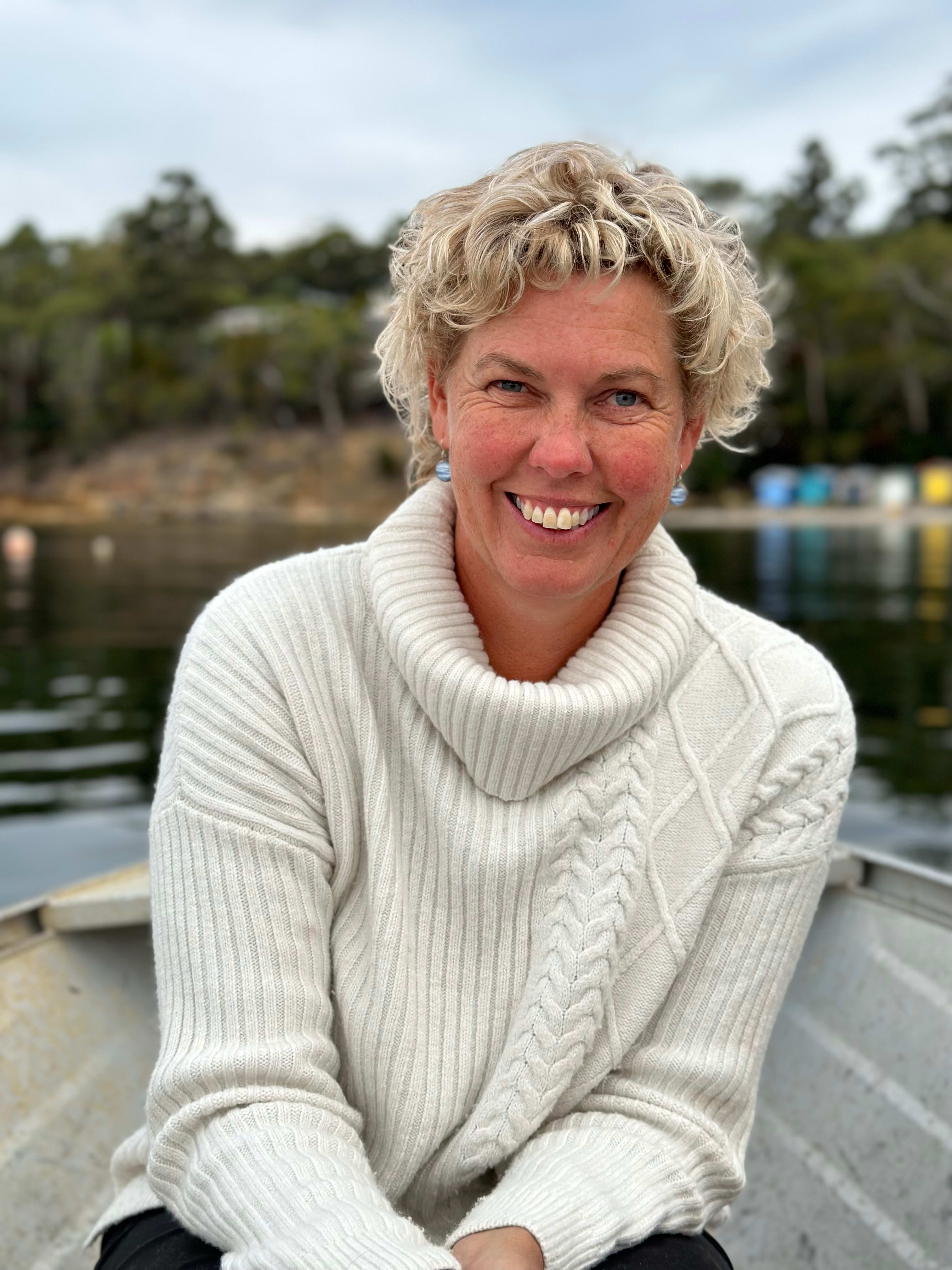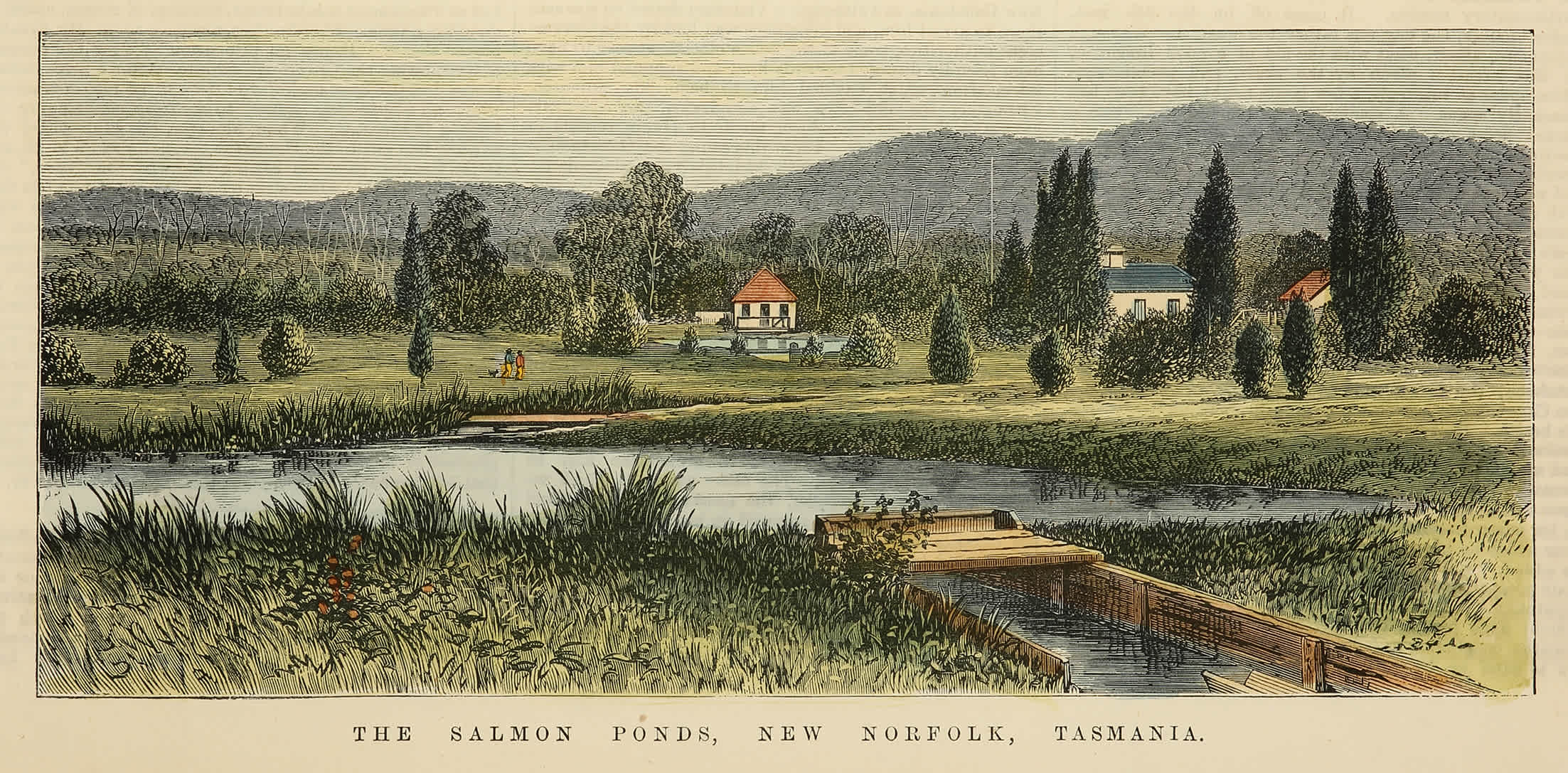We've probably all seen him. He has been reborn as a poster boy for the hospitality industry. He is the face that launched a thousand beers, staring straight at the camera with tolerant disdain and just the faintest hint of a smirk as he poses for the city-based photographer. The crumpled Paddington hat, the stretched waist-coat with the burst button amidships, and the creased and grubby trousers – a working man.
And proud of his product – framed by beer kegs, with his arms draped familiarly over a barrel each. Back then, he had been deliberately sought out and recorded at his place of work by one of the leading portrait photographers of his day because he had become one of the most recognisable characters of Hobart – face and form and nickname known to all.
But after his death, he lapsed into anonymity – the two copies of his portrait that found their way into the Tasmanian Archives were clinically catalogued as “Photograph of a fat employee of the Cascade Brewery”.
THE LEGEND
Then, in 2006, Marcus Harvey and Graeme Corbett selected that photograph for their book, Tasmania: Classic Images, linking the evocative image with an evocative name:
Fatty Appleton, Cascade Brewery, Hobart, c. 1900. Harold Riise
This photo is believed to be of Fatty Appleton who, in the first half of the last century, was a larger-than-life character on the Hobart waterfront. In fact, he and his brothers had the dubious reputation of being handy in a fight and only too willing, if the opportunity arose, to step onto the other side of the law.
The name stuck, and the legend has been growing ever since. “Fatty” has become marketing gold. His image has been used to advertise stout (of course). The Cascade Hotel has a life-sized print on its bar wall. MACq 1 Hotel has a Fatty Appleton Room and a Fatty Appleton Hour at their bar.
His story is retold with relish by Cascade Brewery tour guides, then re-posted by their clients. He has become “the legendary ‘Fatty’ Appleton”, and is now famous for throwing firkin barrels and acting as a crowd controller at his local pub – picking up a brawler under each arm and evicting them out into the street when required. One audio guide even gives him a date, 1836, and has him working for Peter Degraves, builder of the Cascade Brewery.
Little of this is correct. In fact, there is no evidence that the fat employee of the Cascade Brewery was called Fatty Appleton, and much evidence to the contrary.
. . .
Harvey and Corbett's description of Fatty Appleton was almost certainly based on acclaimed Hobart boxer, David “Pat” Appleton. Born in 1905, Appleton worked on the Hobart docks when a young man. As a champion boxer, renowned for his gameness, stamina and hard-hitting, he was constantly in the newspapers, so his court appearances for disturbing the peace, fighting on the wharves and abusing police attracted particular attention. And he had six brothers, of whom Jack was another boxer, Leslie died in a brawl outside a cabaret, and Patrick was accused of attempting to shoot Leslie’s killer.
However, there is no description of Pat Appleton as being fat – just big and strong – a fit professional athlete who held Tasmania’s middleweight and heavyweight boxing titles at various times during the 1920s, 1930s and 1940s. There is no evidence that he was ever referred to as “Fatty Appleton”. Sketches and photos show him as muscular and square-jawed, bearing no resemblance whatever to the “fat employee of the Cascade Brewery”.
In any case, the fat employee was photographed 20 years before David “Pat” Appleton was even born. Both copies of the photo that are held by the Tasmanian Archives are unmistakably branded with the mark of “H. Riise – Hobart”. Harold Riise and HW Barnett had announced their arrival in Hobart in July 1883, establishing their Elite Studio in Macquarie Street and specialising in portrait photography. Barnett left in mid-1884, and Riise continued alone until, early in 1885, he was sued for bankruptcy. Thus the photograph was almost certainly taken in late 1884, when Harold Riise was sole proprietor. Yes, there were other Appletons living in Hobart at that time, but none that remotely fit the description of “Fatty”.
So, it seems that Fatty Appleton was not a legend; he is a myth.
The man
His real name was Richard Holdbrook, (or Holbrook or Holebrook, depending on who was recording it). Richard himself probably didn’t know – he could neither read nor write.
He was born in Warrington, Lancashire, about 1821. Richard and his older brother, Joseph, both weavers, were convicted at the Chester Assizes in December 1843 for burglary, having stolen 55 sovereigns. They were initially transported to Norfolk Island for two years, then transferred to Van Diemen's Land, reaching Hobart Town together on the Blundell in August, 1846.
On arrival, Richard was 25 years old, recorded as being 5 feet 5½ inches (1.66m) tall, of “stout” build, with sallow complexion, oval head, broad face, and broad chin. The two brothers were initially sent to convict probation stations on the Tasman Peninsula and were kept together for several years.
In October 1851, aged 30, Richard Holdbrook married Mary Ann Clark at Saint Georges Church in Battery Point. Mary Ann, a native of Newcastle-on-Tyne, had been sentenced to seven years’ transportation for stealing £14 or £15, and had arrived in Hobart in April 1849 on the Cadet. Richard and Mary Ann received their conditional pardons together on June 21, 1853.
In 1859, Holdbrook was charged with burglary and receiving, but was acquitted. A newspaper account of the trial reports that he lived “near the Cascade Inn” in Cascade Road, and was employed by the Degraves’ brothers of the Cascade Brewery. He was given a character reference by the brewery manager, James Wilson, husband of Peter Degraves’ daughter Deborah.
Successive Hobart valuation rolls (property records) show that Richard and Mary Ann lived in a brick cottage at 24 Cascade Road, immediately next door to the Cascade Inn, from at least 1858 until Richard’s death in 1891.
When Mary Ann died in September 1871 in “Macquarie Street” (the former name of Cascade Road), her status was recorded as “drayman's wife”, confirming that Richard was driving Cascade’s delivery wagon.
. . .
Already described as stout when he arrived in Hobart, Richard Hldbrook obviously kept growing. By 1880, he had become well-recognised around the streets of Hobart, notable for his size and highly visible on the high seat of his delivery dray. He began to attract comment in the newspapers:
For a long time we have felt sorry to see a well-developed form forced to waste its rotundity on a common dray … Mounted on high, on a well filled throne, is shown a face rivalling in roundness a harvest moon, and doing full credit to the firm's well-known product … Degraves' beer. (Hobart Town Herald, October 30, 1880.)
Some articles left him nameless – focussing on “his twenty odd stone of flesh” and “an advertisement for too much malt”, whilst others used his nickname – “Dick of the Cascades Brewery” or “the stolid 'Fat Dick'”. One journalist, describing the operations of the Cascade Brewery, commented, “The number of hands regularly at work muster 50, … I have only counted the gentleman in the high throne of the company’s delivery lorry as one. My instructions are to count by heads, not by weight”.
In the early 1880s, “Fat Dick” was sketched by Hobart artist Thomas Midwood. One of those caricatures, titled “Our Boys”, featured “a quartette of well-known Tasmanian identities … four corpulent men … Messrs. T. Jennings, W. Graham, W. Teed, and R. Holdbrook, whose aggregate weights when in their prime reached about 100 stone”. The four men named by The Mercury were all prominent Hobart characters: Tom Jennings was licensee of the Harvest Home Inn in New Town and weighed 32½ stone (206kg); Walter Graham was clerk of the scales at the Elwick Racecourse and William Teed was licensee of the Steam Packet Tavern on Old Wharf.
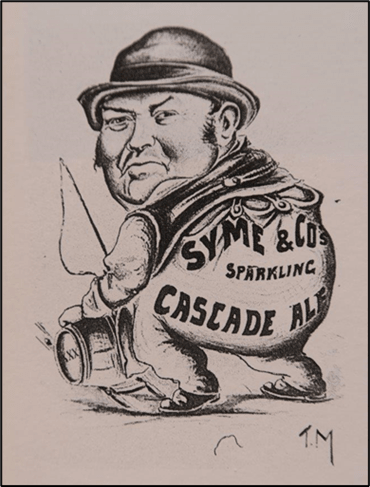
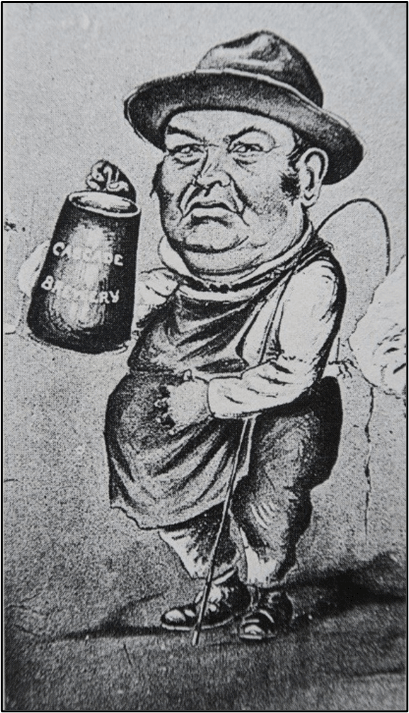
Caricatures of Richard Holdbrook by Tom Midwood. The second image is part of the “Our Boys” quartet.
It was about this time that Richard Holdbrook was photographed in the Cascade Brewery keg yard by Harold Riise. The sandstone wall chosen as the backdrop is still recognisable, about 15 metres inside the main gate of today’s brewery.
When he died at his home in March 1891, aged 69, the “fat employee of the Cascade Brewery” was named as “Richard Holdbrook, who for many years was carter for the Cascade Brewery Company, and whose rotundity caused him to be an object of interest, as was the abnormal size of his colleagues” (Tasmanian News, Dec 31 1891). Indeed, he was so well-known that he was acknowledged in that same Tasmanian News issue as one of “the most prominent persons” to have died in that year.
More than 130 years later, it is his portrait, not his person, that has returned to prominence around Hobart. But the man in the picture has a real identity and a real story. He deserves to be called by his real name, Richard Holdbrook.
Martin Stone is a Tasmanian forester who grew up roaming the foothills of kunanyi/Mount Wellington. Retirement has enabled him to combine his interest in the bush, maps, local history and the mountain, discovering what he had never really noticed and uncovering the stories of what he had never properly understood.

